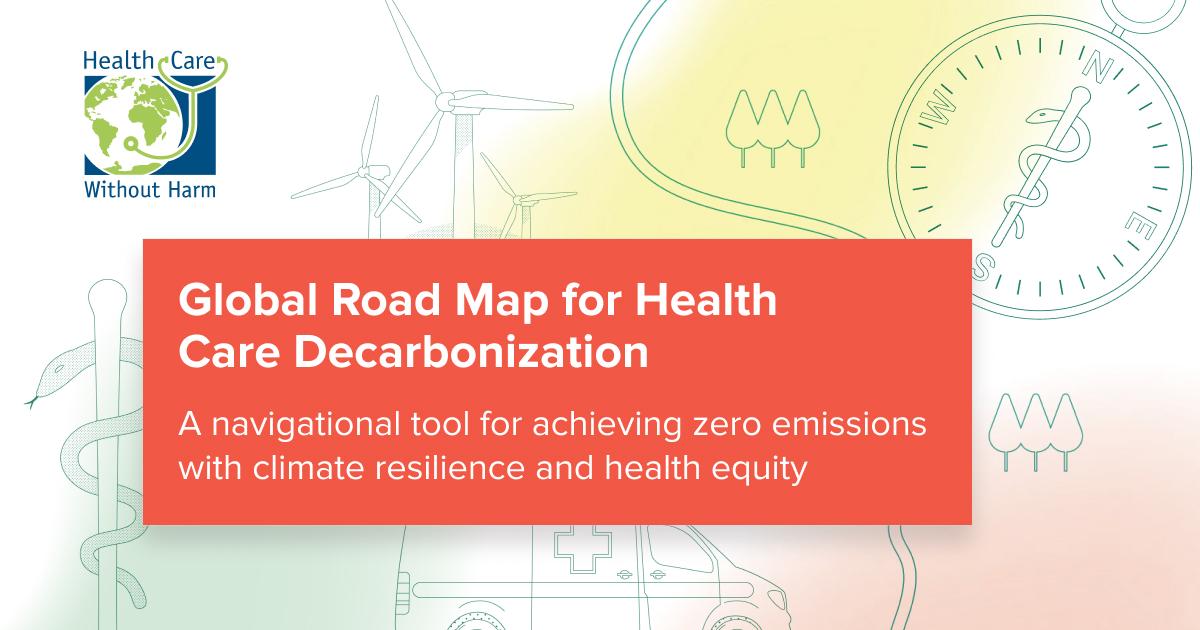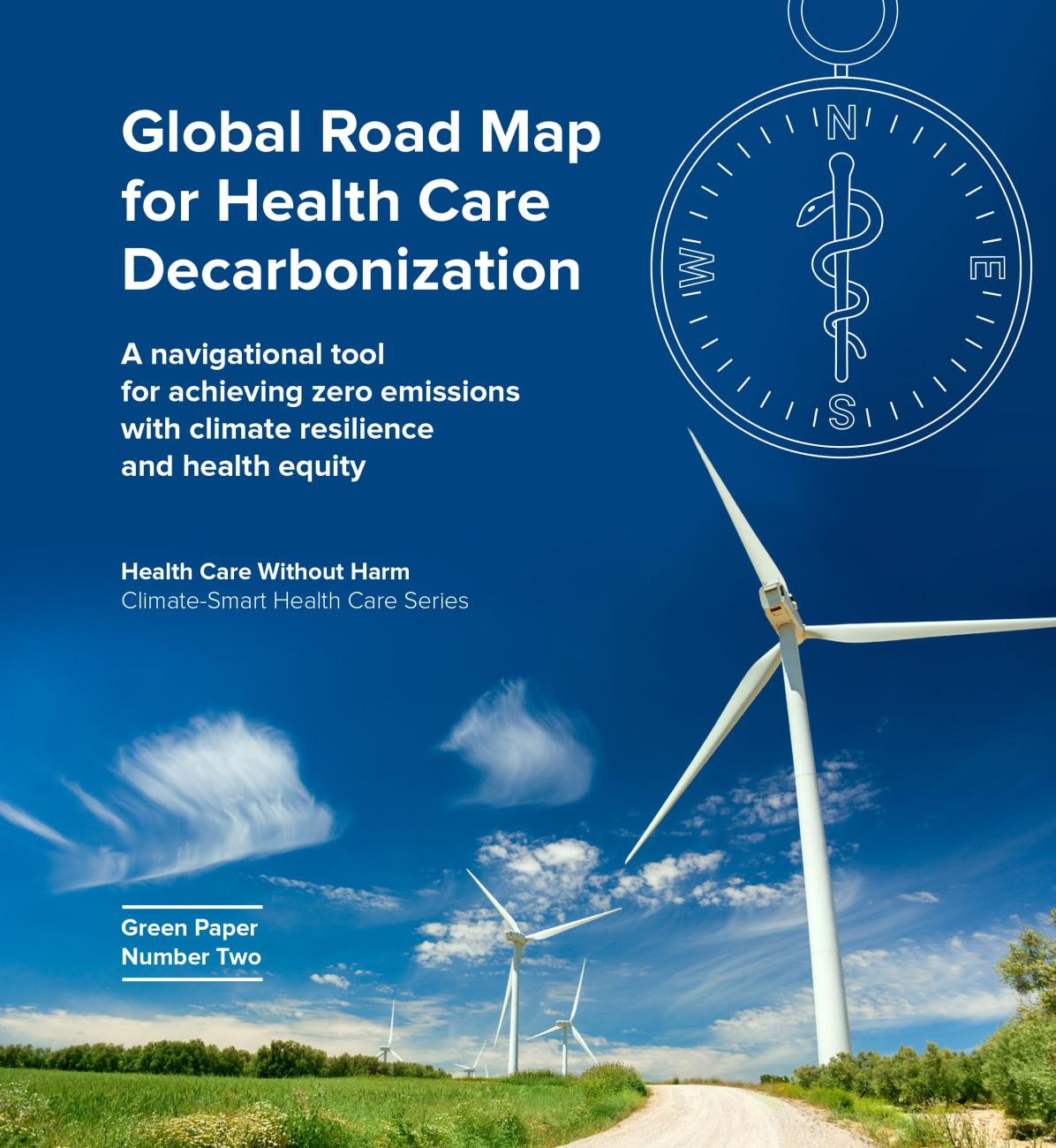Health Care Without Harm, in collaboration with Arup, developed The Global Road Map for Health Care Decarbonization: a navigational tool for achieving zero emissions with climate resilience and health equity, launched on April 14 at the 2021 Skoll World Forum.
The Road Map is the first of its kind to chart a global health care course to zero emissions by 2050. Health care’s climate footprint is already substantial, equaling 4.4% of net global emissions. Without climate action inside and outside the sector, health care’s climate emissions would more than triple to over six gigatons a year by 2050, equal to annual emissions from 770 coal-fired power plants.
“We’re experiencing the climate and health emergencies as one and the same, including increases in respiratory illness from fossil fuel pollution and those caused by dire climate impacts such as wildfires. Health care bears the brunt of these two crises while also, ironically contributing to them through its own emissions. It’s imperative for health leaders to lead by example and act now to reach zero emissions by 2050. The Road Map charts a course in that direction,” says Josh Karliner, international director of program and strategy, Health Care Without Harm, and the Road Map co-author.
Watch the recording of Global Road Map session during the Skoll World Forum
If countries can meet their Paris Agreement commitments, this could cut projected health care emissions growth by 70%, still leaving a large gap to zero emissions. The Road Map demonstrates how health care can implement seven high-impact actions to further reduce sector emissions by 44 gigatons over 36 years, equivalent to keeping more than 2.7 billion barrels of oil in the ground each year.
“In the race to zero emissions, climate action must go hand in hand with establishing health care climate resilience as a disaster preparedness strategy, while ending disparities in health development and access between and within countries,” says Dr. K. Srinath Reddy, President of the Public Health Foundation of India, one of the featured speakers during the launch.
Find the Road Map here
The Road Map also identifies distinct trajectories for health care decarbonization for different nations. Countries with large health sector GHG footprints need to reduce emissions the most rapidly and steepest. Simultaneously, those less responsible, low- and middle-income countries can implement climate-smart solutions to develop their health infrastructure while following a less steep trajectory to zero emissions.
“All countries’ health systems will need to reach zero emissions by 2050 while at the same time achieving global health goals. Many health systems in low- and middle-income countries will require support from developed economies to facilitate access to the necessary solutions during this transition,” says Sonia Roschnik, international climate policy director, Health Care Without Harm, and Road Map co-author.
The new Global Road Map finds that 84% of the sector’s climate emissions are from fossil fuels used across facility operations, supply chain, and the broader economy. This use includes coal, oil, and gas to power hospitals, health care-related travel, and the manufacture and transport of health care products.
Interested in learning more?
The Road Map, Green Paper Two, is the second in a series of research and policy papers that Health Care Without Harm and Arup have produced together to identify a set of actions the health sector can take to align itself with the ambition of the Paris Agreement while simultaneously achieving global health goals.
The Health Care Climate Footprint Report, Green Paper One, defined health care’s climate footprint and opportunities for action. This paper sets out a broad, overarching guide for the sector to move toward decarbonization. Future papers will continue to build out this vision.

